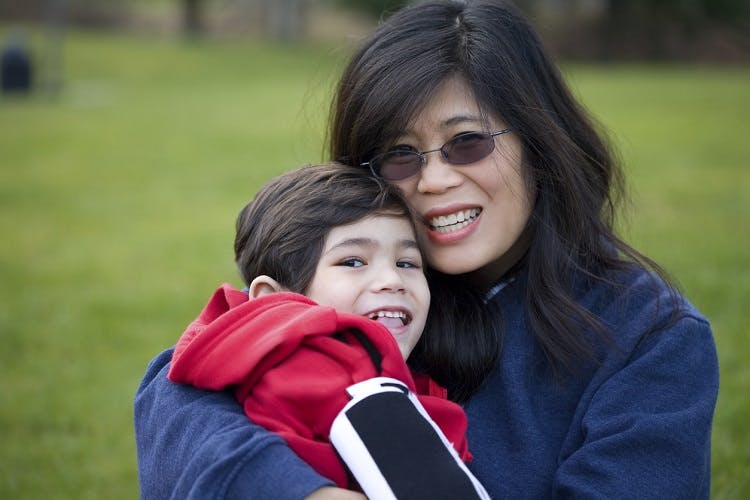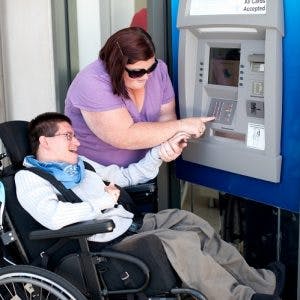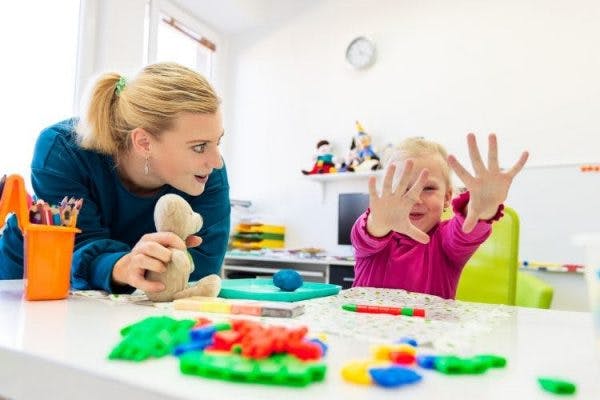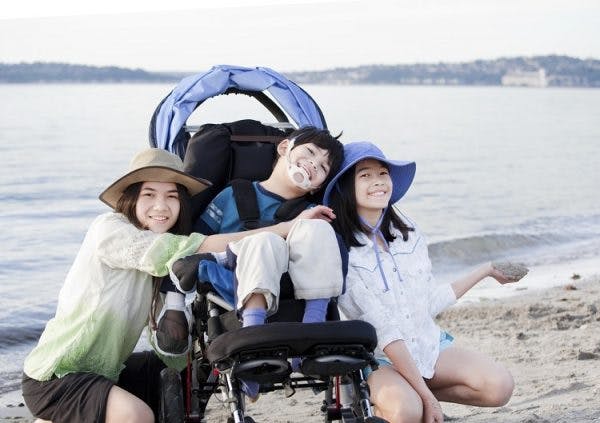When a child develops cerebral palsy after birth, it is called acquired cerebral palsy. While the majority of CP cases are caused during pregnancy or birth, about 10% are acquired after.
To help you better understand what acquired cerebral palsy is, this article will discuss:
- Congenital vs. Acquired Cerebral Palsy
- Effects of Acquired Cerebral Palsy
- Is it Possible to Recover from Acquired CP?
- How to Manage Acquired CP
Congenital vs. Acquired Cerebral Palsy
Cerebral palsy is a motor disorder that is caused by damage to the developing brain before, during, or shortly after birth. Depending on the timing of the event that causes CP, it is classified as either acquired or congenital.
Acquired cerebral palsy refers to cerebral palsy that is developed due to brain damage after the first 28 days of life. While there are conflicting opinions on the supposed “cut-off” age for a CP diagnosis (some say 2 years, others say 5 years), damage to the brain after this period is generally considered a traumatic brain injury rather than CP.
Acquired CP is typically caused by infections, cerebrovascular accidents, and head injuries.
In contrast, congenital cerebral palsy is caused by damage to the brain that occurs during pregnancy or at birth.
Often, a clinical diagnosis may not be made until months or even years after birth. Especially with mild forms of cerebral palsy, symptoms may not be evident until the child starts to get older and demonstrates developmental delays. As a result, it is often not possible to identify with certainty when the brain damage occurred.
Despite the different causes of cerebral palsy, symptoms and management for congenital and acquired CP are similar and primarily dependent on the location and severity of brain damage.
Now that you understand the differences between congenital and acquired cerebral palsy, let’s discuss the effects of acquired CP.
Recognizing the Symptoms of Acquired Cerebral Palsy

Acquired cerebral palsy can cause a wide range of symptoms, depending on the severity and location of the brain injury. Common symptoms and secondary effects may include:
- Abnormal muscle tone
- Poor posture
- Balance difficulties
- Stiff movements
- Abnormal gait (walking pattern)
- Poor coordination skills
- Developmental delays
- Disproportional growth
- Difficulties chewing, swallowing, and speaking
- Uncontrollable movements
Unlike congenital cerebral palsy, which occurs before or during birth, acquired CP develops after birth—often due to brain injuries from trauma, infection, or stroke. Early intervention can make a big difference in managing symptoms and improving quality of life.
In the following section, we’ll discuss whether it is possible to recover from acquired cerebral palsy.
Is it Possible to Recover from Acquired Cerebral Palsy?
While damage to the brain is irreversible, it does not mean individuals with acquired cerebral palsy cannot improve.
Neuroplasticity refers to the brain’s ability to reorganize its neural circuitry, which can help the brain recover functions affected by injury. One of the best ways to promote neuroplasticity is through highly repetitive practice of challenging, meaningful movements and activities.
The consistent stimulation helps reinforce demand for those functions, which promotes neuroadaptive changes in the brain. The more individuals practice any skill or function, the stronger the neural connections in the brain attributed to that function become.
Now that it’s clear that there is potential for individuals with CP to improve their motor functions, let’s discuss management interventions.
Treatment and Management for Acquired Cerebral Palsy

Management interventions for acquired cerebral palsy are highly dependent on each individual’s specific motor impairments. Because everyone experiences cerebral palsy differently, a personalized approach to rehabilitation is ideal.
Below, we’ll discuss various management interventions that may help an individual with acquired cerebral palsy become more functional.
Physical Therapy
Physical therapy focuses on optimizing motor functions through targeted exercise. A physical therapist will assess the individual’s functional abilities and create a personalized exercise plan that helps strengthen the muscles, promote circulation, and encourage full range of motion in the joints.
They also address positioning and posture, as well as how to improve gait (walking) patterns. Orthotics and/or assistive devices, such as crutches or a walker, may also be recommended by a physical therapist.
Learn more about physical therapy for cerebral palsy »
Occupational Therapy
Occupational therapy focuses on improving one’s independence by practicing activities of daily living and working on the basic skills needed to be able to perform activities more easily. For example, individuals may learn new ways to perform daily tasks like brushing their teeth, eating, and dressing on their own.
They could also work on increasing motion in their hand or elbow to be able to hold a fork and bring it to their mouth to eat. Additionally, an occupational therapist may assess whether the client can benefit from the use of adaptive tools and then teach them how to use them.
Learn more about occupational therapy for cerebral palsy »
Speech Therapy
Individuals who experience difficulties controlling the muscles around their mouth may benefit from speech therapy. There, they’ll practice exercises aimed to strengthen their oral motor muscles to improve speech and feeding functions.
Speech therapy can also help individuals who are non-verbal learn how to use alternative forms of communication like voice generators or communication boards.
Learn more about speech therapy for cerebral palsy »
Orthotics
Orthotics like braces, compression garments, and casts may help individuals with acquired cerebral palsy improve their form by providing musculoskeletal support.
Many children with cerebral palsy experience abnormal growth or deformities due to uneven muscle tension. In fact, nearly 20-25% of children with cerebral palsy develop scoliosis (when the spine curves to the side).
While orthotics won’t prevent muscle contractions, they can stabilize muscles and joints to help individuals practice moving with correct form and gently stretch spastic muscles.
Learn more about orthotics for cerebral palsy »
Medications
Depending on the complications an individual with cerebral palsy experiences, various medications may be recommended. For example, someone with severe spasticity may benefit from Botox injections or muscle relaxants. In contrast, someone with chronic pain may use pain relievers. Medications may help relieve complications so individuals with CP can be more functional and have a better quality of life.
Acquired Cerebral Palsy: Key Points
Acquired cerebral palsy refers to motor impairments caused by damage to the developing brain after the first 28 days of life. Therefore, it’s usually caused by external factors such as a traumatic head injury or infection.
Whether an individual develops cerebral palsy before, during, or after birth, every case of CP will be unique and require personalized treatment.
We hope this article helped you better understand what acquired cerebral palsy is and how to manage it.











